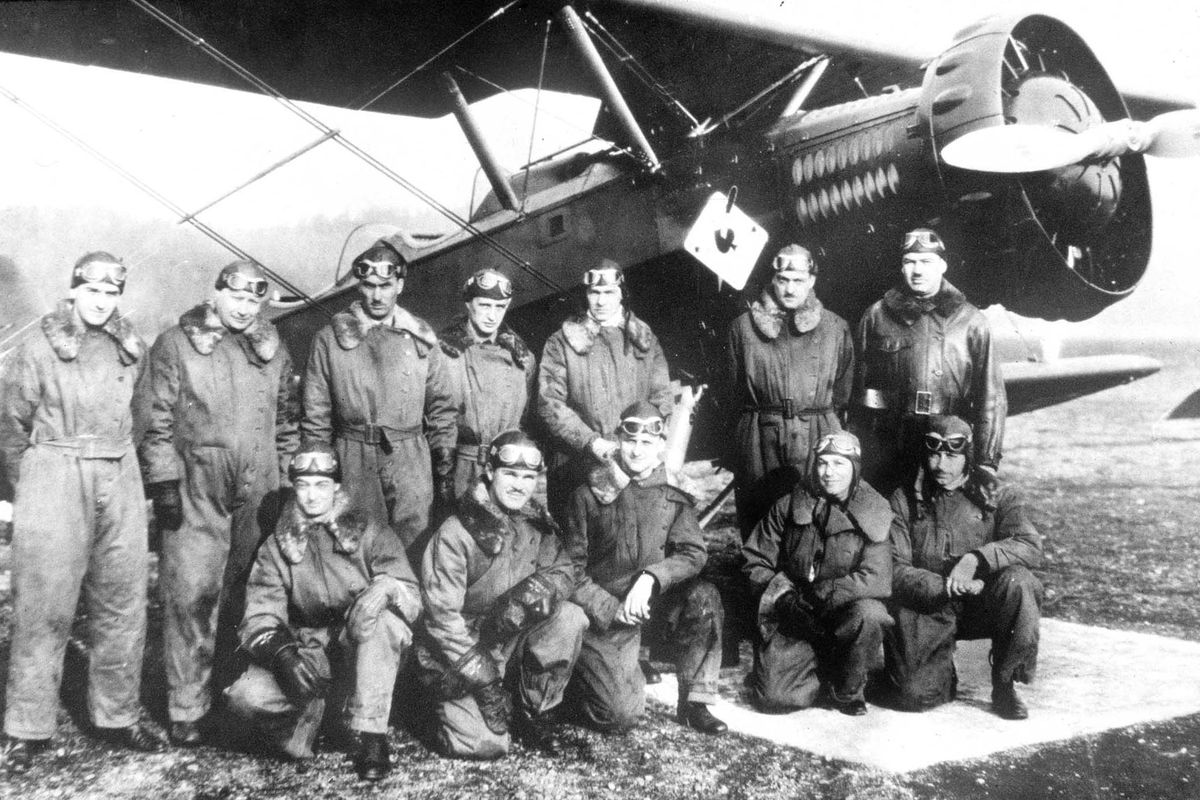Late-night poker game at Felts Field launched ‘unique’ Ace of Spades insignia

The ace of spades emblem emblazoned on 116th Observation Squadron aircraft was born out of a late-night squadron poker game more than 90 years ago at Felts Field.
Lt. Laurence “Laurie” Heral was looking for an idea for the insignia to submit at the card game, said Wes Walton, former historian for the Washington Air National Guard’s 141st Air Refueling Wing.
Walton said Heral was playing around with the idea of an ace of spades, known as the death card, and everyone at the table agreed that was a nice touch. But it was a bit plain.
Legend has it, someone at the table whipped out a bayonet knife and stuck it in the middle of the card and said, “There, now everybody knows we mean business.”
So, the ace of spades with a dagger driven through the center of the card was launched.
Heral created the original artwork and submitted the paperwork to Congress, which approved the emblem in 1931, Walton said.
The original proposal included “Caveat hostis,” Latin for “Let the enemy beware,” at the bottom of the emblem. Congress approved it without the Latin message.
As part of the 100th anniversary, the 141st painted its flagship KC-135 Stratotanker’s tail with the ace of spades design. Military officials revealed the design in February.
The 116th, now the Air Refueling Squadron, still uses the emblem today. Unit members wear the ace of spades patch on their upper arm.
“To this day, the patch remains very unique among squadron patches or Air Force patches,” said Tech. Sgt. Chas Cramer, a boom operator and historian for the unit.
Few units have playing cards as their emblem because of its relation to gambling, but the 116th’s is grandfathered in, said Maj. Brit Quigley, a pilot.
“It is very unique,” he said. “We’ve deployed and people recognize that patch. (They say) ‘That’s Spokane Guard. They’re from Washington,’ so they know that patch.”
Quigley didn’t start out in the 116th, but said he wanted to be part of it when he saw members wearing the patch.
“It was something to attain for me,” he said.
Cramer said when he trained with airmen from other units, “all of them were eyes glued on my patch. They all wanted one.”
He said dozens of them asked for his patch.
“I was brand new,” Cramer said. “I was like, ‘I only have one. I cannot trade this right now.’ So that was definitely very impressive.”
He said the longer he’s been in the unit the more he reflects back on the significance of the 93-year-old insignia.
“It’s very impressive and humbling to be a part of an organization like that,” Cramer said.